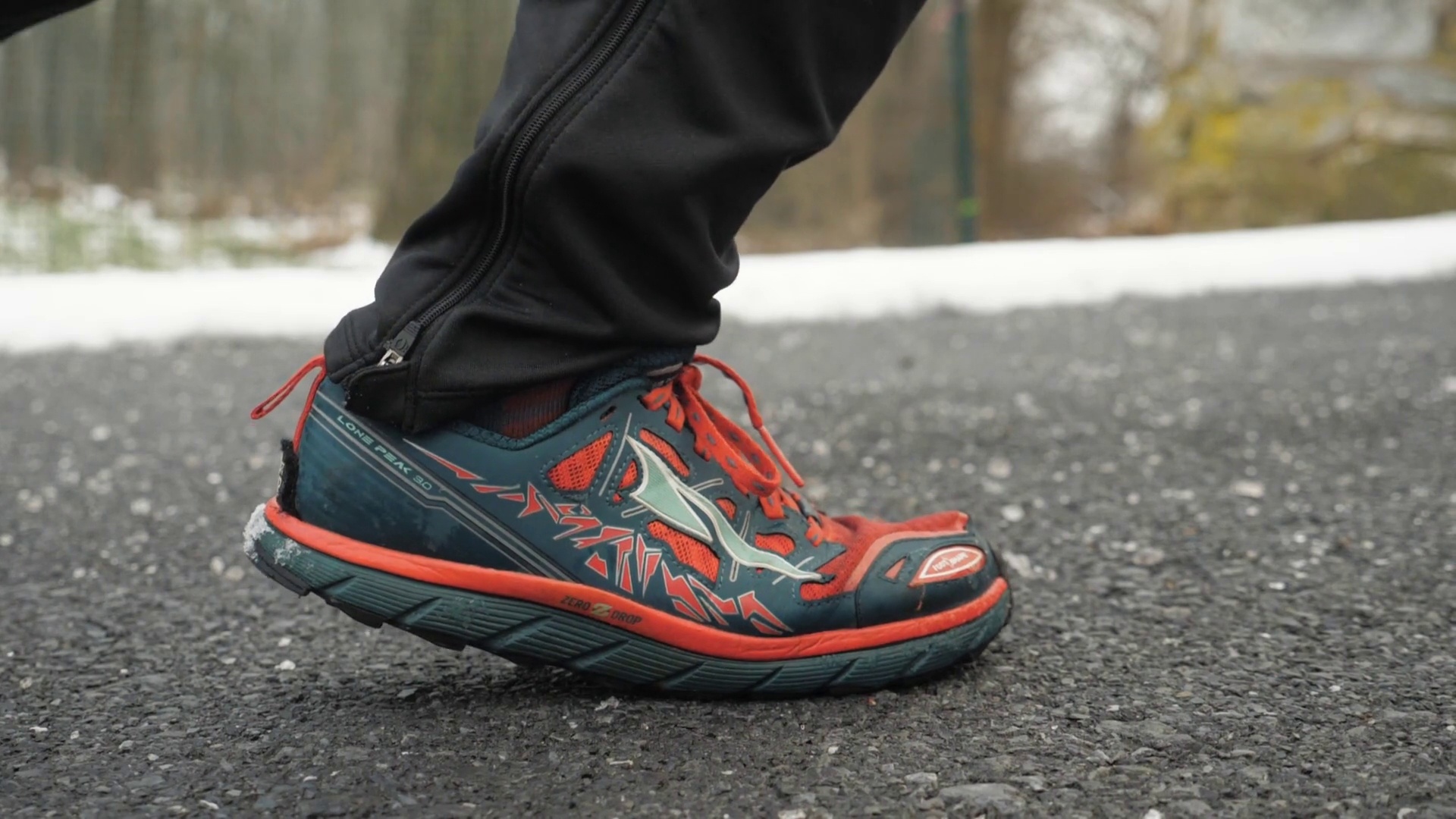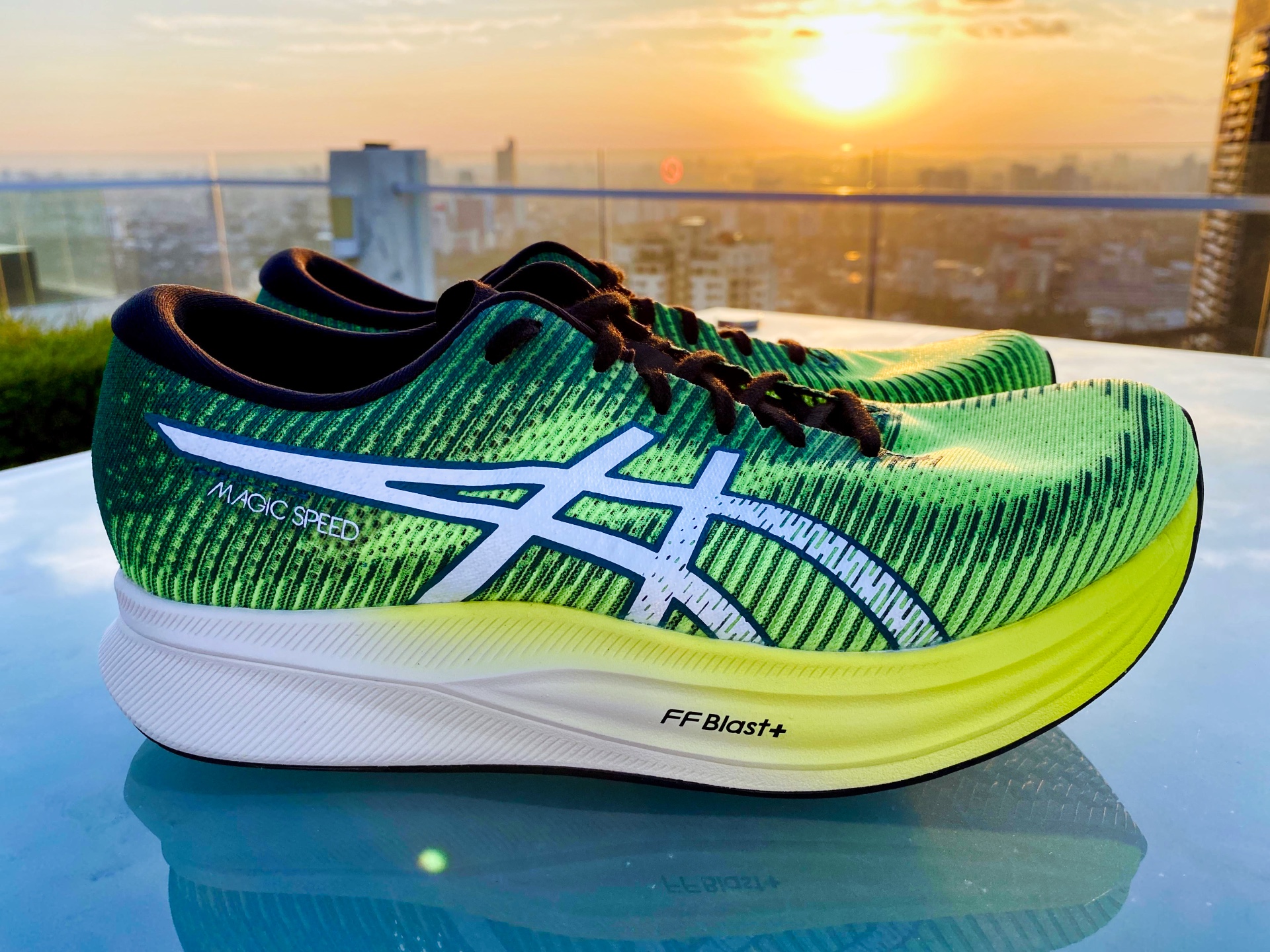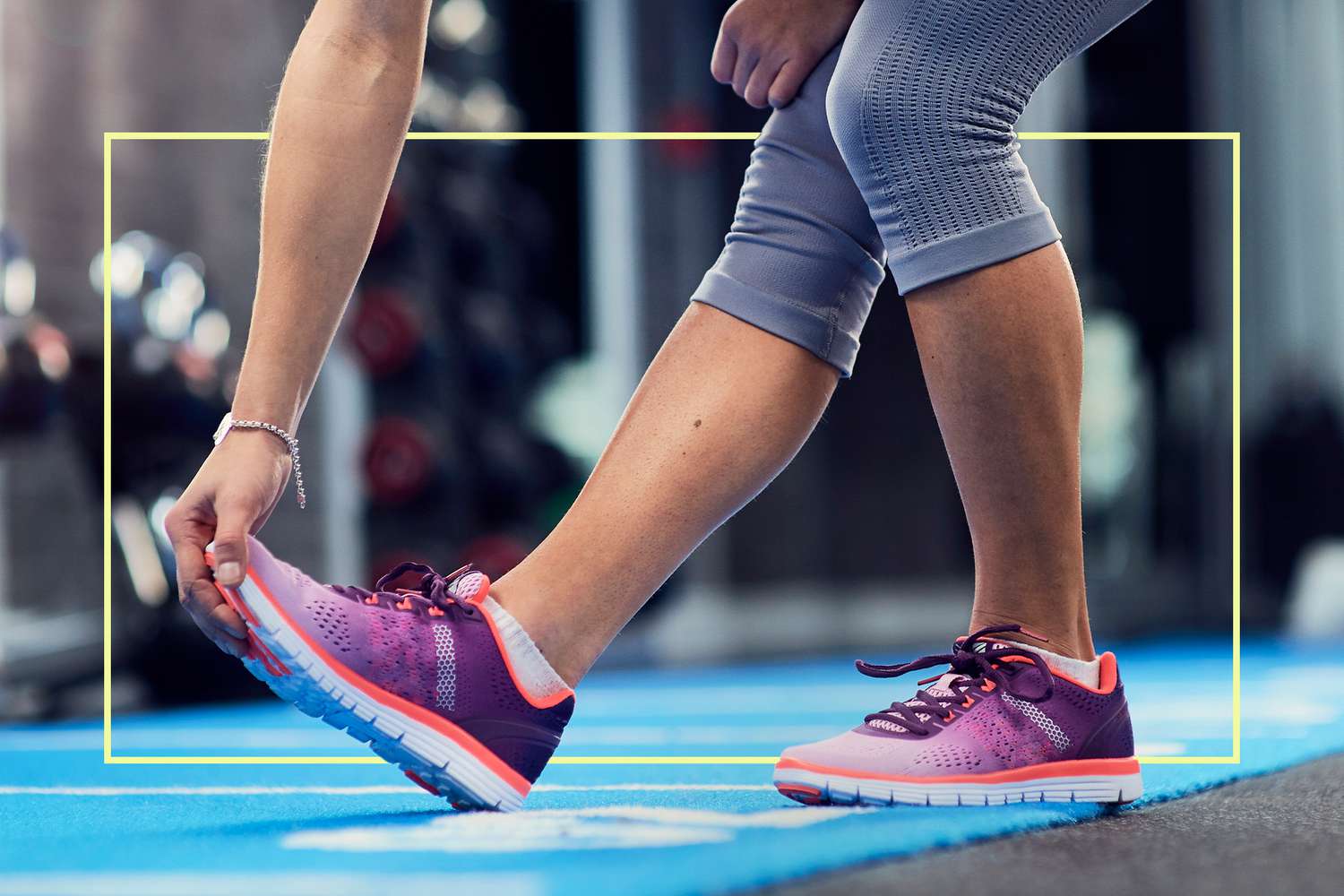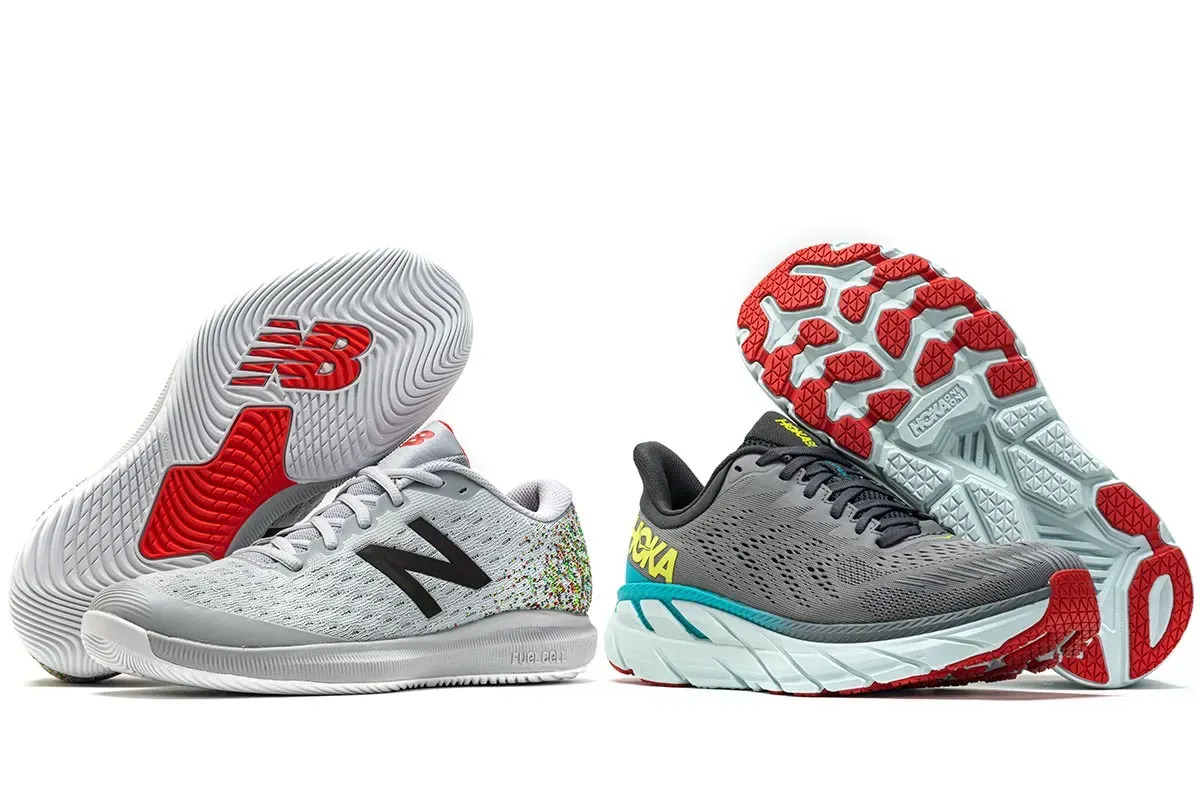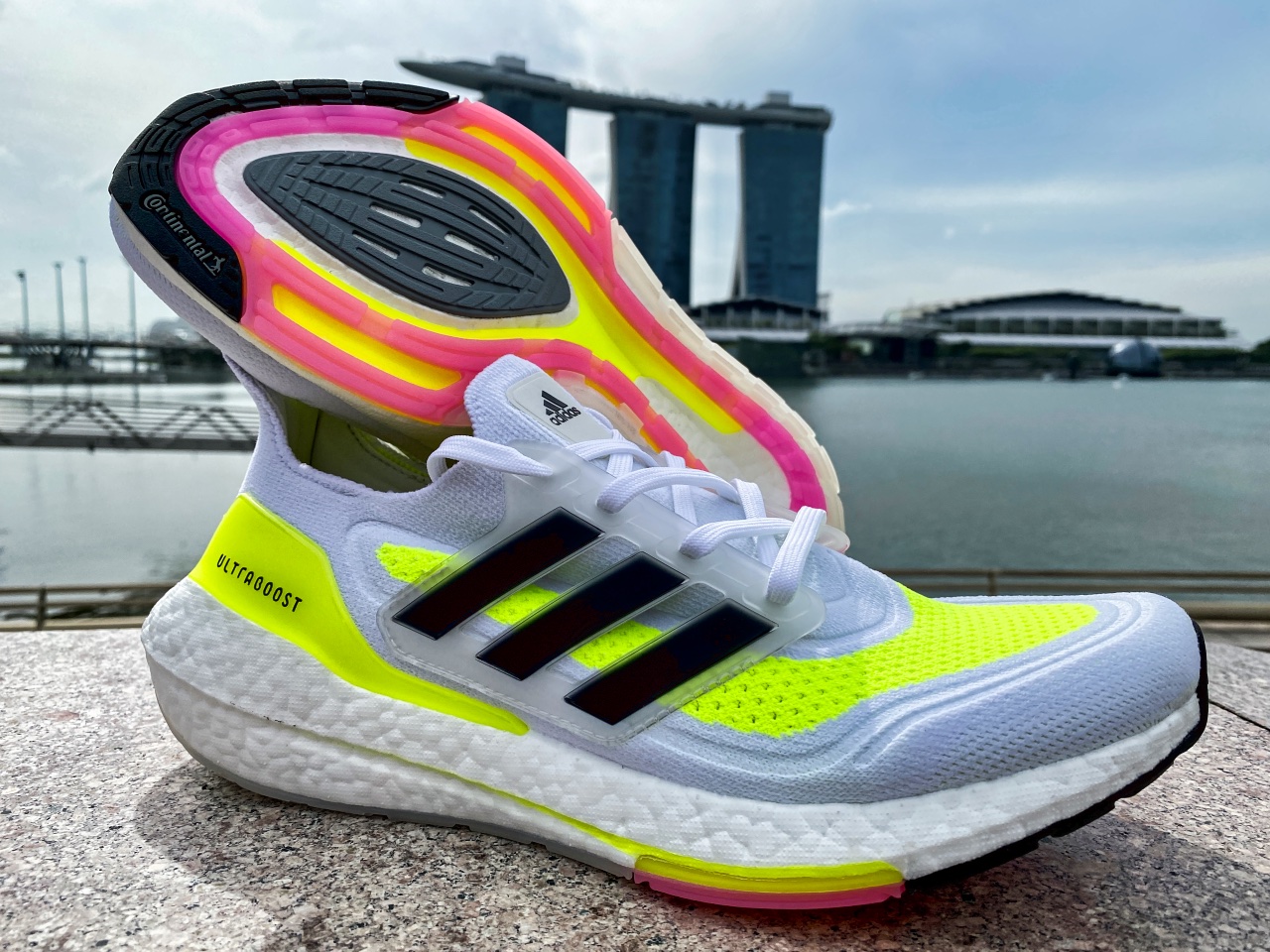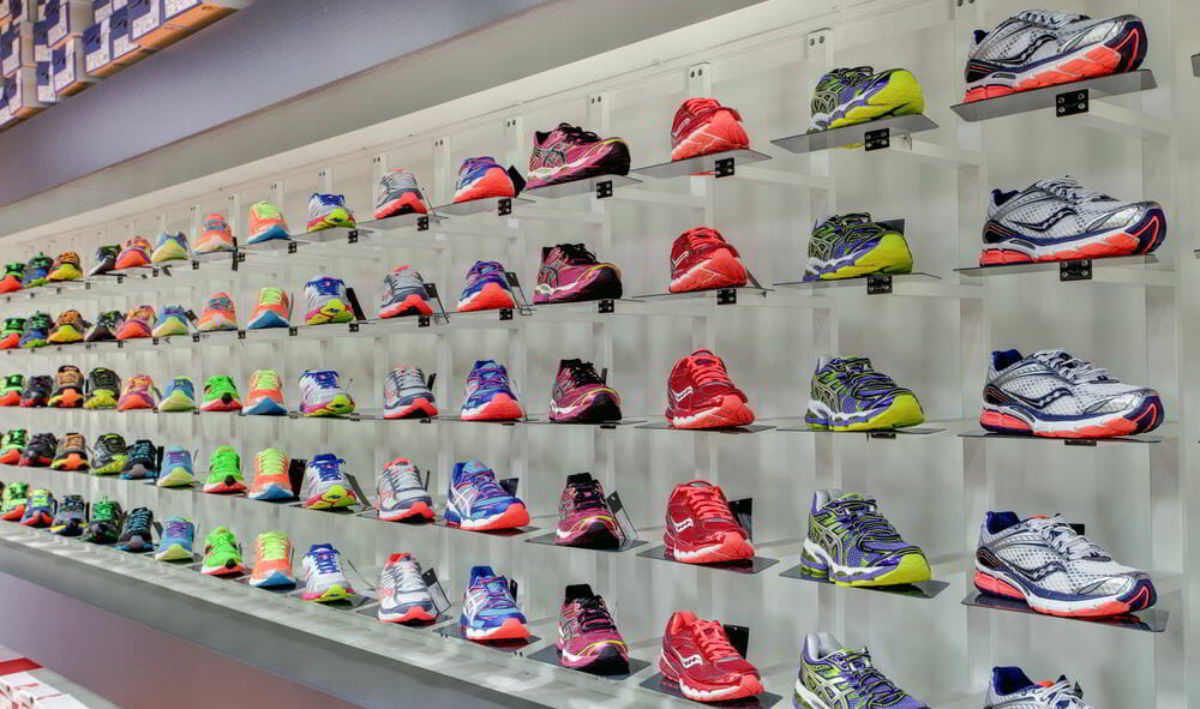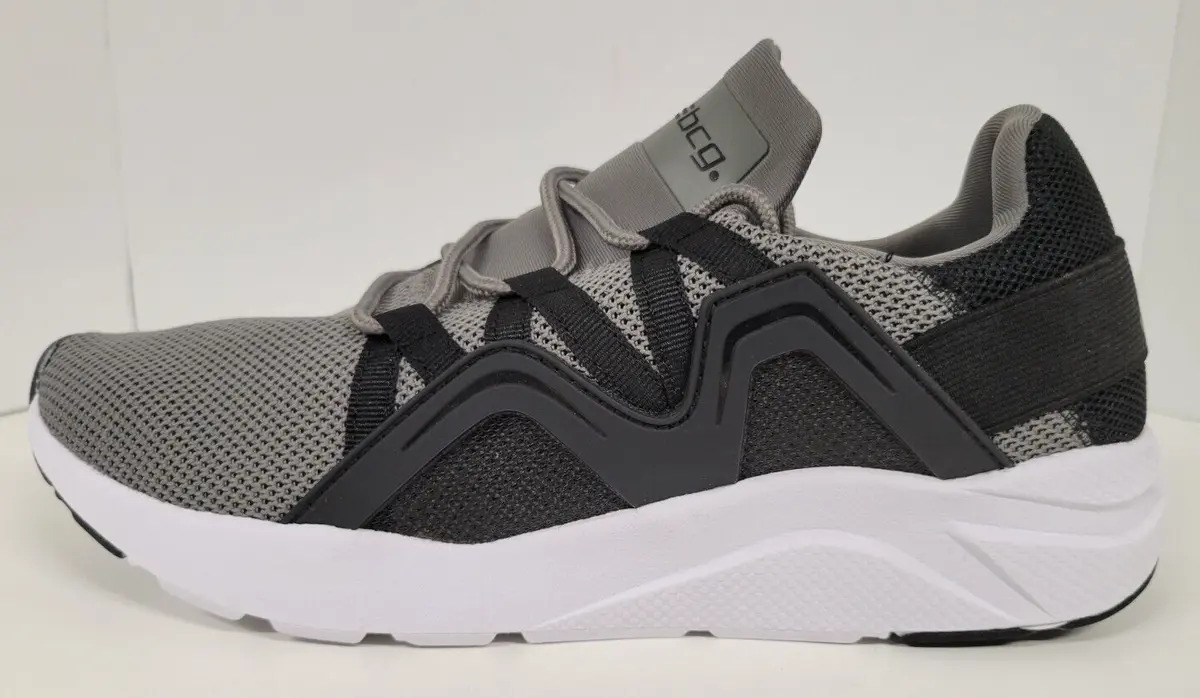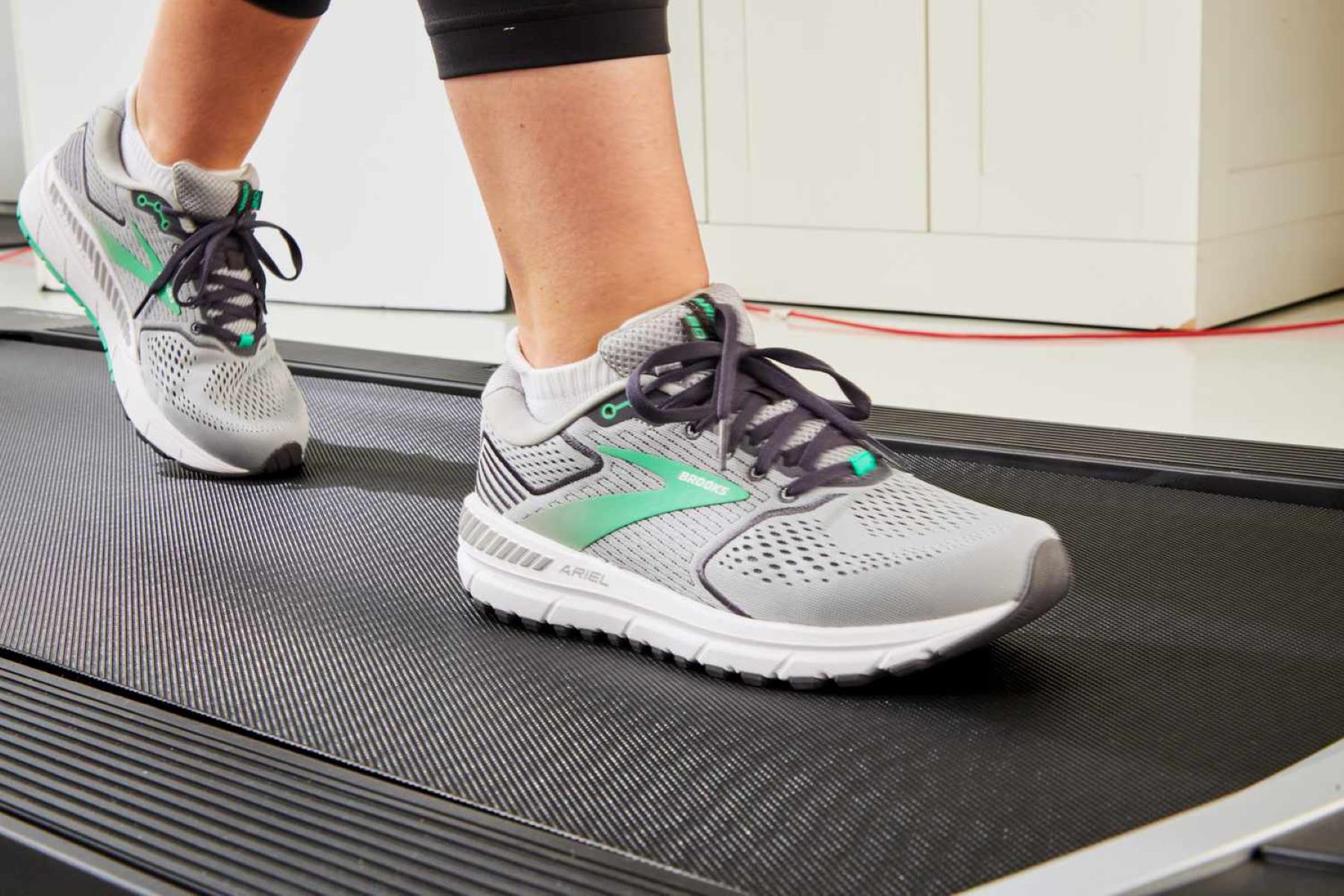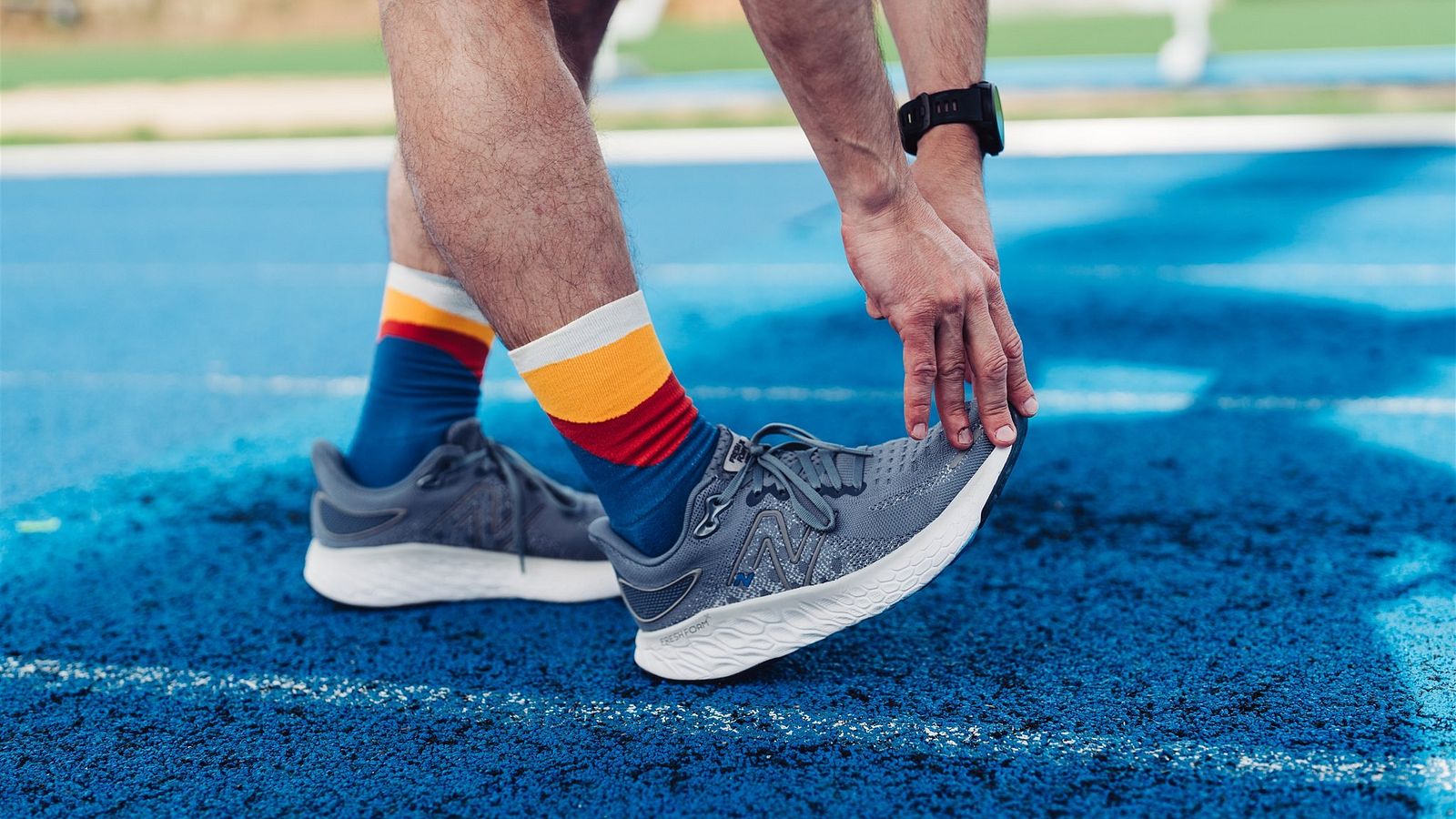

Featured
How To Choose Running Shoes
Modified: May 22, 2024
Discover the best running shoes for your next workout! Our featured selection offers comfort, support, and style to help you perform at your best on the track or trail.
Introduction
Choosing the right running shoes is crucial for both the comfort and performance of runners. Whether you are a seasoned athlete or just starting your running journey, having the proper footwear can make a significant difference in your overall experience. The right running shoes provide the necessary support, cushioning, and stability to help prevent injuries and enhance your performance on the road or trail.
With the multitude of options available in the market, finding the perfect pair of running shoes can be overwhelming. There are various factors to consider, such as your foot type, running gait, and the specific features of the shoe. Making an informed decision will ensure that you choose a pair of running shoes that suits your individual needs.
This article will guide you through the process of selecting the ideal running shoes. We will explore the importance of choosing the right footwear, discuss the factors to consider, and provide insights into understanding your foot type and running gait. Additionally, we will delve into the features and technologies to look for in running shoes and provide tips for trying and testing them. Lastly, we will offer guidance on purchasing running shoes online, making the whole process easier and more convenient.
So, whether you are a seasoned runner looking to upgrade your gear or a beginner just starting out, let’s dive in and explore how to choose the perfect running shoes that will accompany you on your running journey.
Importance of Choosing the Right Running Shoes
Choosing the right running shoes is of paramount importance for runners of all levels. The shoes you wear during your runs can have a significant impact on your performance and overall running experience. Here’s why finding the right pair of running shoes is crucial:
- Injury Prevention: The right running shoes provide necessary support and cushioning to absorb shock and reduce the risk of injuries. They help to distribute the impact of running evenly throughout your feet, ankles, knees, and other joints. Properly cushioned shoes can alleviate strain on your lower body, preventing common injuries like stress fractures, plantar fasciitis, and shin splints.
- Comfort: Comfort is key when it comes to running shoes. Ill-fitting or uncomfortable shoes can lead to blisters, hot spots, and discomfort during your runs. Finding shoes that fit well and feel comfortable can make your running experience enjoyable, allowing you to focus on achieving your goals without distractions.
- Performance Optimization: The right pair of running shoes can enhance your performance by providing the necessary stability and responsiveness. The shoes should support your running gait and allow for proper foot motion. They can help improve your stride, efficiency, and speed, enabling you to go the extra mile.
- Individual Needs: Every runner has unique requirements based on factors such as foot shape, arch type, and pronation patterns. Choosing shoes tailored to your specific needs ensures a customized and personalized fit. By addressing these individual needs, you can optimize your running experience and minimize discomfort or potential issues.
It’s important to note that every runner has different preferences and needs when it comes to running shoes. What works for someone else may not necessarily work for you. Therefore, taking the time to understand your own requirements and finding the shoes that meet those needs is essential.
In the next sections, we will delve into the factors to consider when choosing running shoes, helping you make an informed decision that aligns with your unique running style and requirements.
Factors to Consider When Choosing Running Shoes
When it comes to choosing running shoes, there are several important factors to consider. By taking these factors into account, you can find a pair of shoes that not only fit well but also support your feet and running style. Here are the key factors to consider:
- Foot Type: Understanding your foot type is crucial in determining the right running shoes. There are three main foot types: high arches, normal arches, and flat feet. High-arched runners typically require more cushioning and stability, while those with flat feet may need extra arch support. Knowing your foot type will help you narrow down the options and find shoes that provide the necessary support and comfort.
- Pronation: Pronation refers to the movement of your foot as it strikes the ground while running. Determining your pronation pattern (neutral, overpronation, or underpronation/supination) can guide you in selecting the appropriate shoe type. Pronation affects the way your foot absorbs shock and transfers energy. Opting for shoes with features that address your pronation pattern can help maintain proper alignment and minimize the risk of injuries.
- Shoe Size and Fit: Choosing the right shoe size and fit is crucial for comfort and performance. Ill-fitting shoes can cause discomfort, blisters, and foot issues. Make sure to measure your feet and try on shoes in the late afternoon or evening when your feet tend to swell slightly. Look for a thumb’s width of space between your longest toe and the end of the shoe. The shoes should feel snug but not tight, with enough room for your toes to wiggle.
- Comfort and Cushioning: The level of cushioning and comfort provided by the shoes is essential. It should be sufficient to absorb impact and protect your joints. Some runners prefer more cushioning, while others prefer a more minimalist design. Try on different shoes and determine the level of cushioning that feels comfortable to you.
- Arch Support: Arch support is crucial in maintaining proper foot alignment and reducing the risk of injuries. For flat-footed runners or those with low arches, shoes with built-in arch support or customized orthotics can provide the necessary stability. Runners with high arches may require shoes with a more flexible midsole to accommodate their foot shape.
- Running Surface: Consider the type of surface you primarily run on. Different shoes are designed for different surfaces, such as road running, trail running, or a combination of both. Road running shoes typically have more cushioning and are lighter, while trail running shoes have more aggressive traction and provide better stability on uneven terrain.
By considering these factors, you can narrow down your options and find running shoes tailored to your specific needs. In the next sections, we will explore how to determine your foot type, understand your running gait, and identify the features and technologies to look for in running shoes.
Understanding Your Foot Type
Understanding your foot type plays a crucial role in determining the right running shoes that provide optimal support and comfort. There are three main foot types: high arches, normal arches, and flat feet. Identifying your foot type can help you choose shoes that best accommodate your unique needs. Here’s how you can determine your foot type:
High Arches: If you have high arches, your midfoot and arch area will appear to be elevated, leaving a large open space between the ball of your foot and your heel when you stand. People with high arches may have inadequate shock absorption, which can lead to issues like stress fractures and shin splints. Running shoes with ample cushioning and arch support are essential for high-arched runners to provide stability and distribute impact evenly throughout the foot.
Normal Arches: If you have “normal” or neutral arches, your foot will have a distinct curve along the inside of your sole, with a middle ground between high arches and flat feet. Runners with normal arches typically have a balanced stride and can often choose from a wide range of running shoe options. Opt for shoes that provide moderate arch support and cushioning to maintain proper alignment and prevent overpronation.
Flat Feet: If you have flat feet, the arch of your foot collapses or comes in contact with the ground when standing. This lack of arch support can lead to overpronation, where your foot rolls inward excessively. Flat-footed runners can experience problems such as plantar fasciitis and instability. Choosing running shoes with good arch support and motion control features can help stabilize the foot and prevent overpronation.
It’s important to note that while these general foot types can provide a starting point, every individual is unique. Your foot type is not the sole determining factor in choosing the right running shoes. Other factors, such as the shape of your foot, running gait, and personal preferences, should be taken into consideration as well.
If you’re unsure about your foot type, it can be helpful to consult with a podiatrist or visit a specialty running store. These experts can analyze your foot structure, assess your gait, and offer recommendations for suitable running shoe options.
Now that you have a better understanding of your foot type, let’s move on to the next section, where we’ll discuss how to determine your running gait and its importance in choosing the right running shoes.
Determining Your Running Gait
Understanding your running gait is essential when it comes to choosing the right running shoes. Your gait refers to the way your foot strikes the ground and moves as you run. There are three main types of running gaits: neutral, overpronation, and underpronation (also known as supination). Determining your running gait can help you find shoes that provide the necessary support and stability. Here’s how you can determine your running gait:
Neutral Gait: Runners with a neutral gait have a balanced foot strike, with the foot landing on the outside edge of the heel and rolling slightly inward to distribute the impact evenly. If you have a neutral gait, your shoes should offer a combination of cushioning and stability. Look for neutral or stability shoes that have a moderate amount of arch support and provide a good balance between cushioning and responsiveness.
Overpronation: Overpronation occurs when your foot rolls excessively inward as it lands, causing your arch to collapse. This can put significant stress on your feet, ankles, and knees. Overpronators can benefit from running shoes with features that provide motion control and stability. Look for shoes with firmness in the arch area and extra support to reduce the inward rolling and maintain proper alignment. These shoes are often categorized as stability or motion control shoes.
Underpronation/Supination: Underpronation, also known as supination, happens when your foot rolls outward instead of inward as it strikes the ground. This can lead to insufficient shock absorption and potential injuries. If you have an underpronation gait, look for running shoes with ample cushioning to help absorb the impact and promote a more neutral foot strike. Flexible and well-cushioned shoes, often categorized as neutral or cushioned shoes, are typically the best choice for runners with this gait.
One way to get an idea of your running gait is to examine the wear patterns on your current running shoes. If you notice more wear on the inside edge of the shoe, you may have an overpronation gait. Wear on the outside edge indicates an underpronation/supination gait. Balanced wear across the shoe suggests a neutral gait.
Professional gait analysis is another option to determine your running gait. Specialty running stores or podiatrists can conduct tests to observe your gait and provide specific insights into your foot strike and pronation. They may use tools like treadmills, video analysis, or pressure mapping systems to assess your running mechanics accurately.
Understanding your running gait helps you find the right shoes that align with your specific biomechanics and offer the necessary support and stability. In the next section, we will discuss the various features and technologies to look for in running shoes that can enhance your overall running experience.
Shoe Features and Technologies to Look For
When choosing running shoes, it’s important to consider the features and technologies that can enhance your running experience. Here are some key features to look for:
- Cushioning: The level of cushioning in running shoes can vary, depending on your preference and running style. Cushioning helps absorb impact and reduces the stress on your joints. Shoes with ample cushioning are ideal for long-distance runners or those who need extra shock absorption. Lighter cushioning may be suitable for faster-paced runs or those who prefer a more minimalist feel.
- Arch Support: Adequate arch support is crucial for maintaining proper foot alignment and reducing the risk of injuries. Look for shoes that provide the right level of arch support for your foot type. Some shoes have built-in arch support, while others offer customizable options with removable insoles or the ability to add orthotics if needed.
- Stability: Stability features in running shoes help control excessive motion and prevent overpronation. These shoes often have firmer midsoles and additional support structures to guide your foot into a more neutral position. If you have a tendency to overpronate, selecting shoes with stability features can help improve your gait and reduce the risk of injuries.
- Flexibility: Flexibility is important for allowing natural foot movement and a smooth transition through the gait cycle. Look for shoes that have a balance of flexibility and support, depending on your running style and foot mechanics. Shoes that are too stiff can hinder your stride, while overly flexible shoes may lack stability.
- Traction: If you plan on running on different surfaces, such as trails or wet pavement, consider shoes with adequate traction to provide grip and prevent slips. Trail running shoes often have more aggressive outsole patterns and durable materials to provide traction in off-road conditions.
- Breathability: Running shoes with good breathability allow air to circulate and keep your feet cool and dry during your runs. Look for shoes with mesh uppers or other breathable materials that allow for proper ventilation.
- Weight: The weight of running shoes can impact your performance, particularly during races or speed workouts. Lighter shoes can help improve your speed and responsiveness. However, it’s essential to find a balance between lightweight design and adequate cushioning and support.
- Durability: Running shoes undergo significant wear and tear, so choosing shoes with durable materials and construction can ensure they withstand the demands of your running routine. Look for reinforced toe caps, robust outsole materials, and durable upper materials to prolong the life of your shoes.
It’s important to note that not all features are suitable for every runner. The right combination of features depends on your individual needs, running style, and foot biomechanics. When trying on shoes, pay attention to how they feel on your feet, and consider trying them out on a short run to assess their performance before making a final decision.
Remember, finding the perfect running shoes may involve some trial and error, as what works for one person may not work for another. Take the time to explore different options and consult with experts or experienced runners for recommendations.
In the next section, we will cover tips for trying on and testing running shoes, ensuring that you make an informed decision based on your specific needs and preferences.
Trying On and Testing Running Shoes
Trying on and testing running shoes is a crucial step in finding the perfect pair that fits well and meets your running needs. Here are some essential tips to consider when trying on and testing running shoes:
- Visit a Specialty Running Store: Specialty running stores often have knowledgeable staff who can provide expert guidance and assist you in finding the right shoes. They can analyze your gait, measure your feet, and offer recommendations based on your specific needs and preferences.
- Bring Your Own Running Socks: When trying on running shoes, bring a pair of running socks that you would typically wear during your runs. This will give you a more accurate feel for the fit and comfort of the shoes.
- Try on Both Shoes: Make sure to try on both the left and right shoes. Keep in mind that your feet might not be exactly the same size or shape. The shoes should feel comfortable and snug, with enough room in the toe box for your toes to move freely.
- Walk and Run: Take a short walk and, if possible, jog or run in the shoes within the store. Pay attention to how they feel during different movements. They should provide a supportive and comfortable fit, with no areas of pinching or discomfort.
- Assess Fit and Stability: Check for proper fit and stability by performing lateral movements and quick turns. The shoes should provide adequate support and prevent your feet from sliding inside. Your heel should feel securely locked in without any slippage.
- Consider Orthotics or Custom Insoles: If you wear orthotics or custom insoles, bring them along when trying on shoes. This will help you determine if the shoes can accommodate your specific needs and still provide a comfortable fit.
- Test on Different Surfaces: If possible, test the shoes on different surfaces that match your running terrain. This can give you a better sense of how the shoes perform and provide the necessary traction and stability for your runs.
- Listen to Your Body: Pay attention to any discomfort, pain, or instability while trying on and testing running shoes. Your body knows best, so trust your instincts and choose shoes that feel comfortable and supportive for your needs.
Keep in mind that the shoe-buying process may require trying on multiple pairs and testing them before finding the perfect fit. Don’t rush the decision and take the time to make an informed choice that aligns with your running style and preferences.
If you are considering purchasing running shoes online, make sure to read reviews, check the sizing charts provided, and consider the return policy to facilitate the process and ensure a good fit.
Now that you have a better understanding of how to try on and test running shoes, let’s move on to the final section where we will provide tips for purchasing running shoes online.
Tips for Buying Running Shoes Online
Buying running shoes online can be convenient and offer a wide range of options, but it’s important to take certain factors into consideration to ensure you make the right choice. Here are some tips for buying running shoes online:
- Research and Read Reviews: Before making a purchase, research different brands and models of running shoes. Read reviews from other runners to get insights into the fit, comfort, and performance of the shoes you’re interested in. This can provide valuable information to help inform your decision.
- Know Your Foot Type and Gait: Understanding your foot type and running gait is crucial when buying running shoes online. Make sure to determine your foot type (high arches, normal arches, or flat feet) and your running gait (neutral, overpronation, or underpronation). Look for shoes that are suited to your specific needs and requirements.
- Check Sizing Guide and Charts: Pay close attention to the sizing guide provided by the online retailer. Shoe sizes can vary between brands, so it’s important to measure your feet and compare them to the size chart to ensure an accurate fit. Take into consideration any specific instructions provided by the retailer regarding sizing.
- Read Product Descriptions Carefully: Take the time to read the product descriptions thoroughly. Look for details about the shoe’s features, technologies, cushioning, and stability. This can help you determine if the shoe aligns with your requirements and preferences.
- Consider Previous Shoe Models: If you’ve had success with a particular running shoe model in the past, consider looking for the latest version or a similar model. This can give you a good starting point and increase the likelihood of finding a shoe that fits well.
- Check Return Policy: Before making a purchase, review the online retailer’s return policy. Ensure that you have the option to return or exchange the shoes if they don’t fit correctly or meet your expectations.
- Utilize Virtual Tools: Some online retailers offer virtual shoe fitting tools or recommend using apps that help measure your feet and suggest appropriate shoe sizes. These tools can provide additional guidance and increase the likelihood of finding the right fit.
- Read Customer Feedback: In addition to reading reviews, pay attention to customer feedback on the online retailer’s website. Look for comments regarding the fit, sizing, and overall satisfaction of other customers who have purchased the same shoes.
- Ask for Recommendations: Seek recommendations from fellow runners or online communities. Join running forums or social media groups to gather insights and recommendations from experienced runners who can provide valuable advice on which running shoes to consider.
Remember, buying running shoes online can be convenient, but it’s important to do your homework and make an informed decision. Take advantage of the available resources, research, and feedback to find the best-fitting shoes that meet your specific running needs.
With these tips in mind, you’re ready to confidently navigate the process of purchasing running shoes online. Now, equip yourself with the knowledge and insights gained throughout this article to find the perfect pair of running shoes that will support you on your running journey!
Conclusion
Choosing the right running shoes is vital for a comfortable and enjoyable running experience. By considering factors such as your foot type, running gait, and specific shoe features, you can find a pair of shoes that provide the necessary support and enhance your performance.
Understanding your foot type allows you to choose shoes that offer the right level of arch support and stability. Determining your running gait helps you identify whether you need neutral, stability, or cushioned shoes to maintain proper alignment and reduce the risk of injuries.
When trying on and testing running shoes, it’s crucial to visit specialty running stores or consult with experts who can provide professional guidance. Taking the time to walk, jog, and perform lateral movements in the shoes can ensure they fit well and provide the necessary support and comfort.
For those considering buying running shoes online, conducting thorough research, reading reviews, and checking sizing guides and charts are essential. Utilizing virtual fitting tools, reviewing product descriptions, and considering previous shoe models can also aid in making an informed decision. It’s important to be aware of the return policy and utilize customer feedback to gather additional insights.
Remember that everyone’s feet and running needs are unique, so what works for others may not work for you. Don’t rush the process and don’t hesitate to seek recommendations from experienced runners or professionals.
Ultimately, selecting the right running shoes will help prevent injuries, improve comfort, and optimize performance. So take the time to find the perfect pair of running shoes that will accompany you on your running journey, and enjoy every step along the way!
